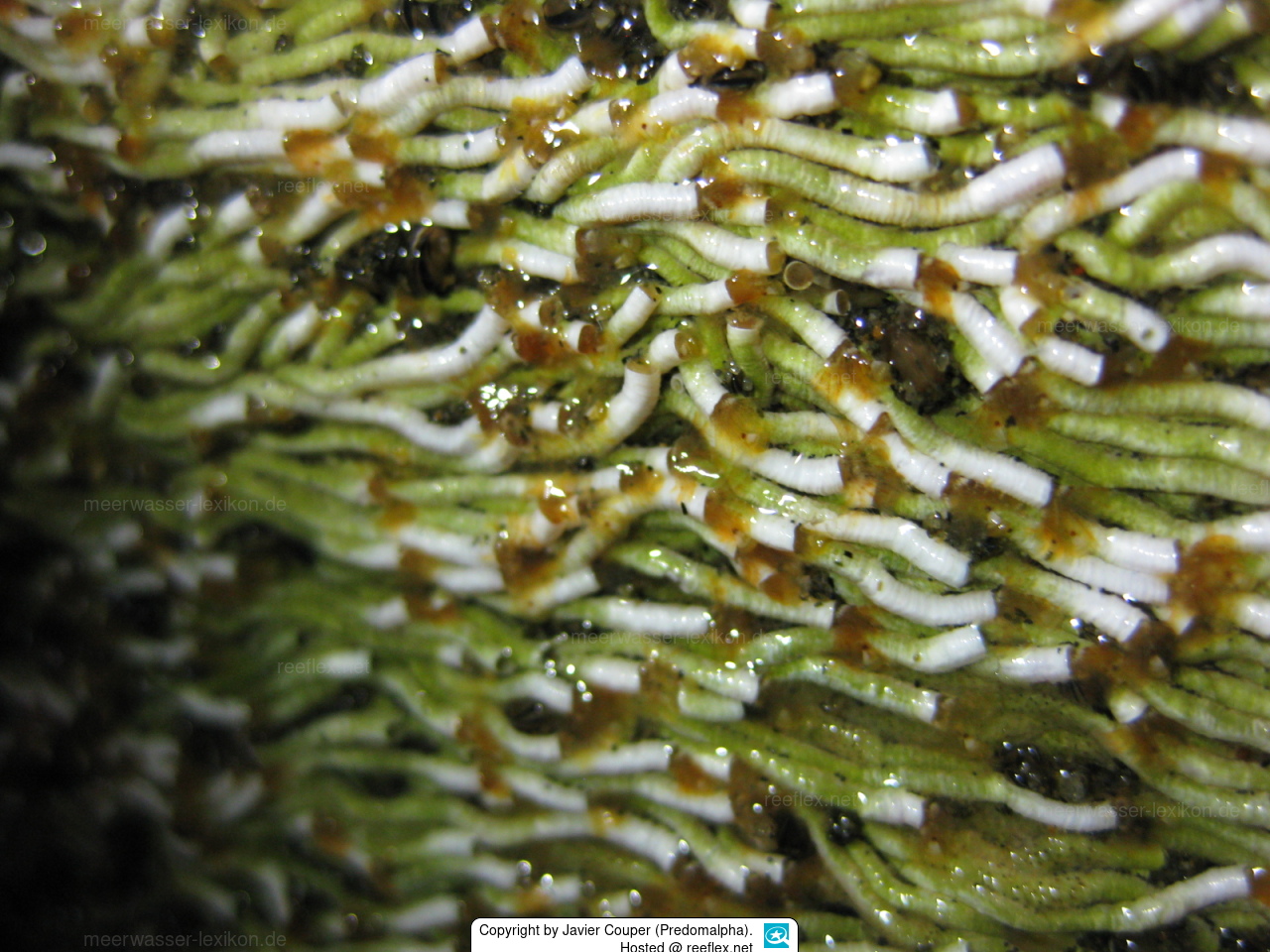Info
Special thanks for the first photo of Salmacina australis to Javier Couper, New Sealand.
Members of the genus Salmacina form an open cluster of numerous smooth, tiny, branched tubes that form a lace-like, irregular network over the substrate.
An operculum is not present, nor is a radiolar membrane.
Note: In Haswell's first description of Salmacina australis, the presence of an operculum is explicitly mentioned, but a definite clarification is not possible for us, for that such a tube worm would have to be examined again.
Currently, only one species in southern Australia, Salmacina australis, is known with these characteristics.
This colonial tubes up to about 5 cm long (length of the tube), the tube reaches a diameter of 1 mm or less.
Biology: Salmacina species are able to reproduce asexually by sprouting new individuals (clones).
Habitat: These small tubeworms inhabit hard surfaces such as ship hulls, rocky substrates, reefs, nearshore shores and sea caves in intertidal to continental shelf depths.
Colour: The tubes are white, the tentacles of the worms are reddish-orange.
Synonym: Salmacina dysteri australis Haswell, 1885
Members of the genus Salmacina form an open cluster of numerous smooth, tiny, branched tubes that form a lace-like, irregular network over the substrate.
An operculum is not present, nor is a radiolar membrane.
Note: In Haswell's first description of Salmacina australis, the presence of an operculum is explicitly mentioned, but a definite clarification is not possible for us, for that such a tube worm would have to be examined again.
Currently, only one species in southern Australia, Salmacina australis, is known with these characteristics.
This colonial tubes up to about 5 cm long (length of the tube), the tube reaches a diameter of 1 mm or less.
Biology: Salmacina species are able to reproduce asexually by sprouting new individuals (clones).
Habitat: These small tubeworms inhabit hard surfaces such as ship hulls, rocky substrates, reefs, nearshore shores and sea caves in intertidal to continental shelf depths.
Colour: The tubes are white, the tentacles of the worms are reddish-orange.
Synonym: Salmacina dysteri australis Haswell, 1885







 Javier Couper (Predomalpha), New Zealand
Javier Couper (Predomalpha), New Zealand



